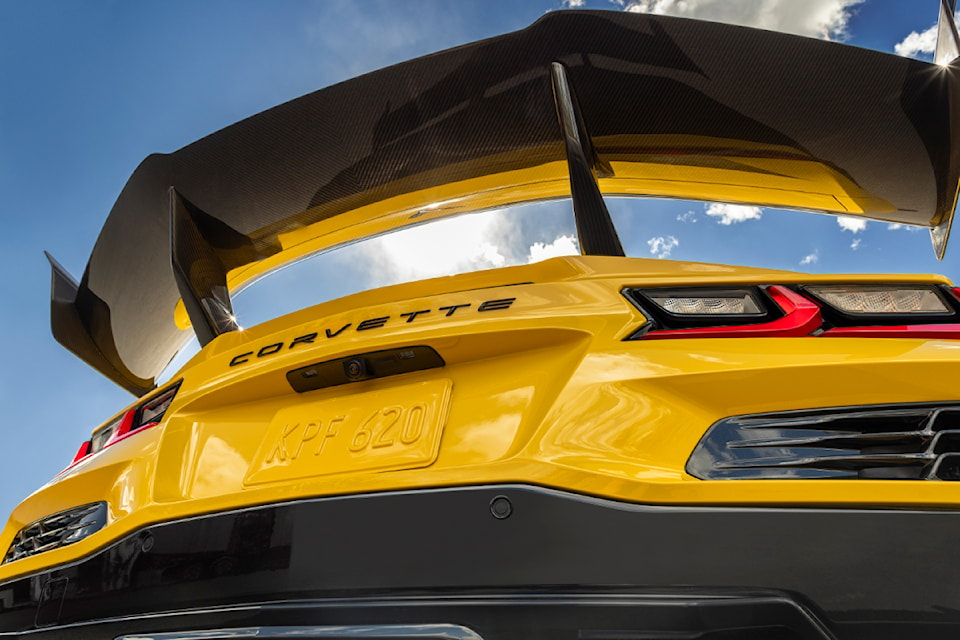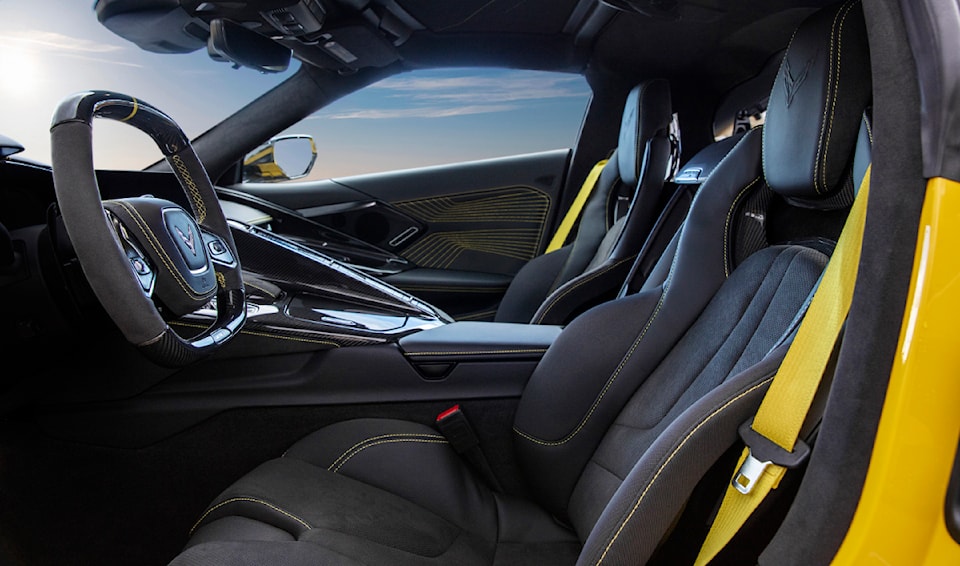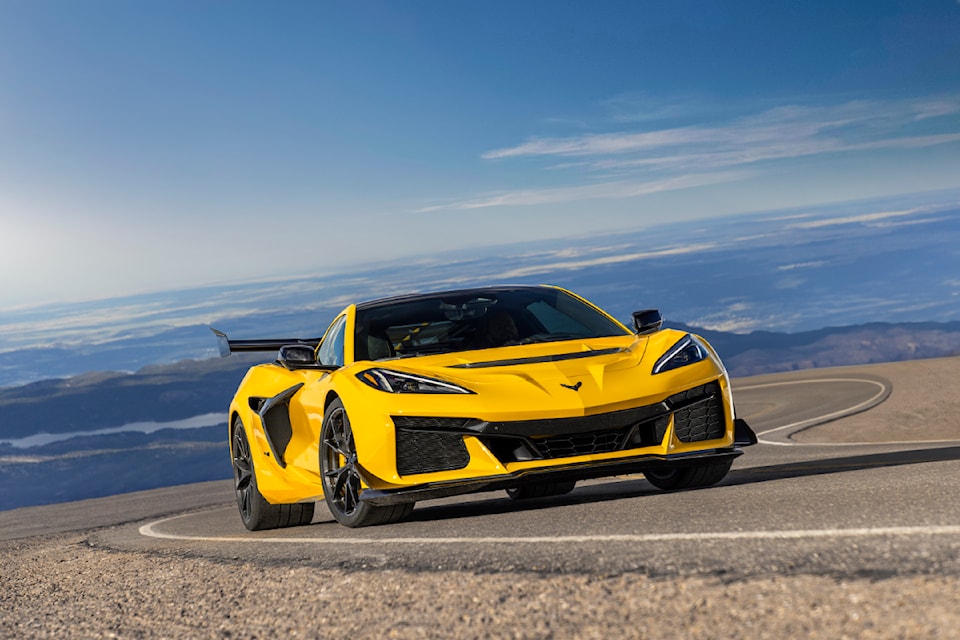One-thousand and sixty-four horsepower. Let that number sink in. That’s the output of the 2025 Corvette ZR1.
The ZR1 badge is saved for the most potent of Corvettes, ever since the original 1990 version rolled off the brand’s Bowling Green, Kentucky, assembly line.
Back then, the ZR1’s bespoke double-overhead-cam 5.7-litre V-8 produced 375 horsepower and 370 pound-feet of torque.
By the time the third-generation ZR1 arrived for 2019, output had climbed to 755 horsepower and 715 pound-feet of torque.
The latest ZR1 is clearly the greatest ever. While the previous engine was supercharged (a belt-driven compressor), the new one is twin-turbocharged (exhaust-gas-driven compressors). The 5.5-litre V-8 positioned behind the cockpit is a modified version of what’s found in the Z06 Corvette, which makes 670 horsepower without turbochargers.
The ZR1 will be available in convertible and coupe body styles. The latter comes with a carbon fibre roof and split rear window that pays homage to the 1963 Corvette Sting Ray, which had a similar divided window.
The ZR1 engine receives several upgrades including unique pistons and connecting rods, larger combustion chambers plus a special fuel-injection system.
According to Chevrolet, the twin-turbo V-8 — the first such powerplant installed in any Corvette — is the most powerful engine ever built in North America by an automobile manufacturer. Also claimed is the ZR1’s top speed of 345-plus km/h and the ability to cover the quarter mile in less than 10 seconds.

Note that there is no electric assist like in the Corvette E-Ray hybrid. The ZR-1 is all internal combustion, but why turbochargers? They are easier to package than a supercharger, their weight can be moved lower, and they have no parasitic power loss. That means more power for the same level of boost. The fact the ZR1 can make 1,064 horsepower on pump gas and not racing gas or E85 is astounding.
Compare that with the 740-horsepower McLaren 750S and the 819-horsepower Ferrari 296 GTB, both costing in the neighbourhood of $400,000. But we all know that horsepower is just one number and the rest of the ZR1 has to perform, too.
Directing power to the rear wheels is an eight-speed paddle-shift transmission with automatic mode. Other Corvette models get it, but the ZR1’s hand-assembled version has been beefed up to handle the engine’s 828 pound-feet of torque.
Braking is the job of special carbon-ceramic rotors designed to keep component temperatures in check. Chevrolet states they play a role in the ZR1’s ability to accelerate from 130 km/h to 320 km/h and back to 130 in 24.5 seconds. Honestly, there’s no benchmark or reference for this, but it seems quick. As expected, the ZR1 has a continuously variable suspension.

The ZR1’s body has special features and touches. One of the most unique is an extra air duct in the side intakes located aft of the doors. They direct air to the rear brakes for cooling.
An available ZTK performance package comes with a carbon-fibre front underbody spoiler (splitter) and massive curved rear wing. Collectively, they produce up to 1,200 pounds (545 kilograms) of downforce, which would improve the ZR1’s cornering speed on a race circuit. Additional ZTK content includes stiffer springs and Michelin Pilot Sport Cup 2R tires that are designed for the best grip. Carbon-fibre wheels are optional and weigh about 20 kilograms less than a set of four aluminum wheels.
Chevrolet tested the ZR1’s performance capabilities on various race courses, including Road Atlanta, Virginia International Raceway and the demanding 13-mile-long Nürburgring course in Germany.
The interior looks much like any other Corvette, but with premium trim and ZR1 graphics.
The starting price for the Corvette ZR1 hasn’t been announced but given the tamer Z06’s $159,500 entry fee, a best guess would be in the $250,000 range, depending on content. Production begins next year.
That’s not exactly chump change, but the ZR1 and its exotic-car performance will exist in the company of cars costing considerably more. In that regard, it has to been seen as a deal.
Let the comparisons to Lamborghini, Ferrari and McLaren begin.



